
Rights Reserved - Free Access.
This digital object is protected by copyright and/or related rights. This digital object is accessible without charge, but its use is subject to written permission.
Unless expressly stated otherwise in the licensing conditions, you are free to make any of the acts permitted by your national copyright and related rights act, including browsing, printing and making a copy for your own personal purposes.
All other acts of reproduction and communication to the public are subject to the licensing conditions attached to the digital object.
ARMY BOOTS OF THE WORLD. REVIEWS
Important notice: we do not sell any boots! The prices are given for information purposes only!
France ![]()
"Rangers" (BMJA 65 or BM65) - the Boots of the French Armed Forces
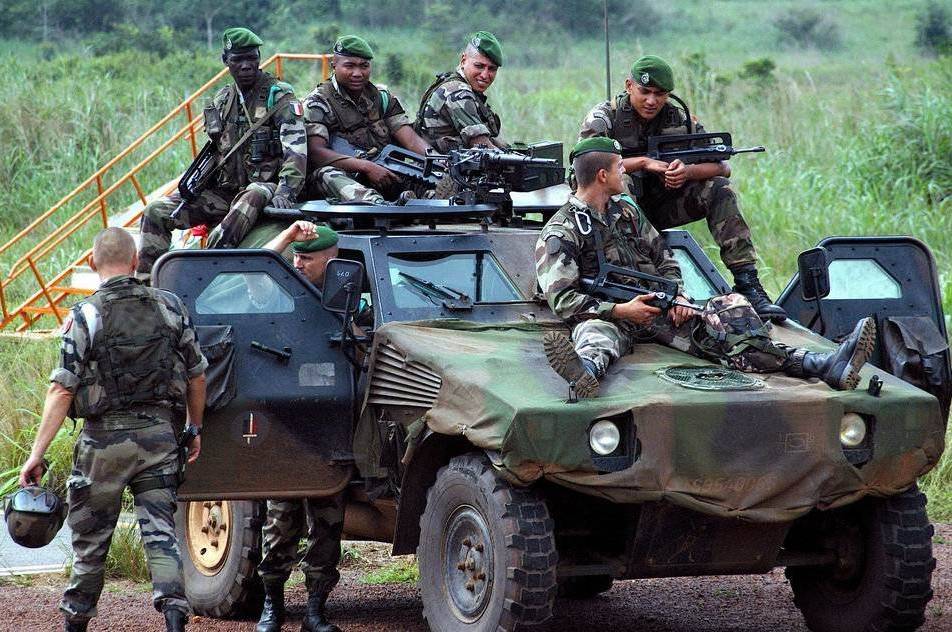
The distinctive and very recognizable appearance of the French soldiers is gradually receding into the past under the pressure of the trends of uniforms and equipment unification. Such unification occurs both in the NATO countries, as in the other militarily advanced countries of the world, which are not members of the Alliance.
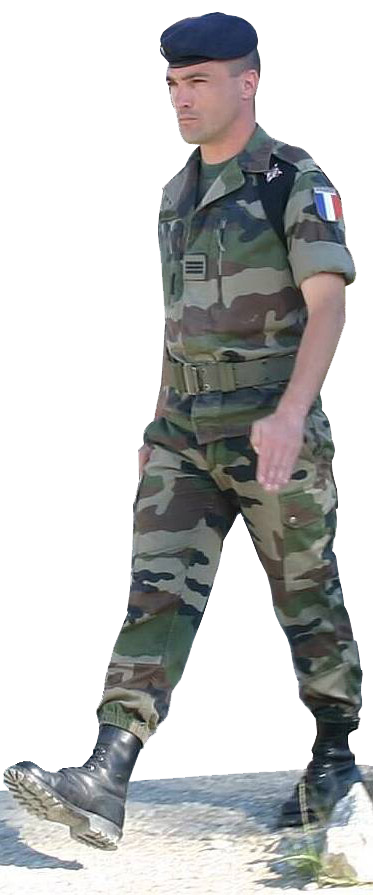
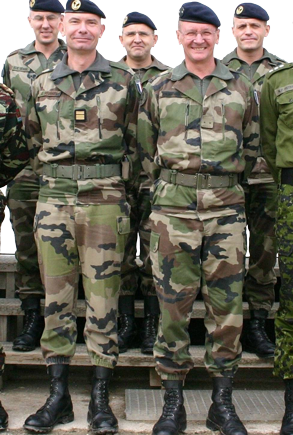
The French military boots "Rangers" (also called "Rangeos" or "Rangeots"), as they are called by the French servicemen, are easily recognizable among all the other military boots. These regular French military boots (Rangers réglementaires de l'Armée Française) complete the appearance of a French soldier from the late 1970s to the 2010s.
The full name of these boots in French are: "Rangers" BMJA 65 (Brodequin de Marche à
Jambière Attenante) or just "Rangers" BM65
(Brodequin de Marche modèle 65).
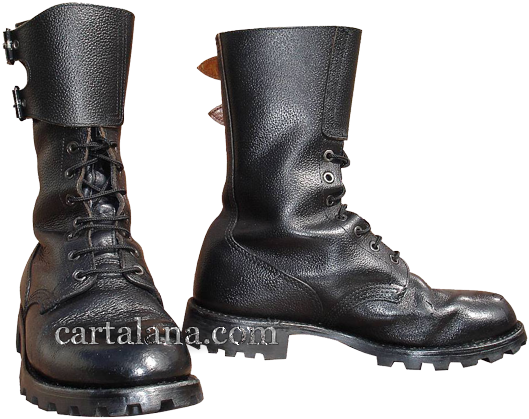
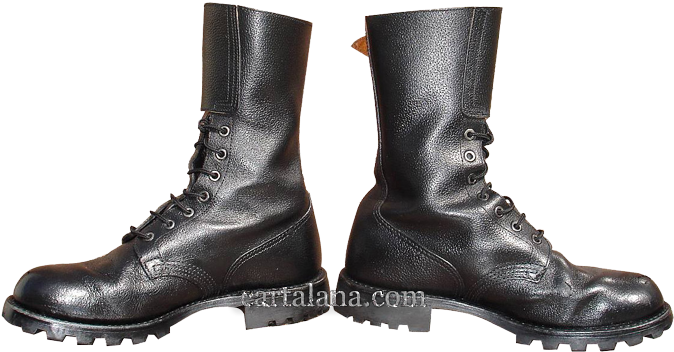
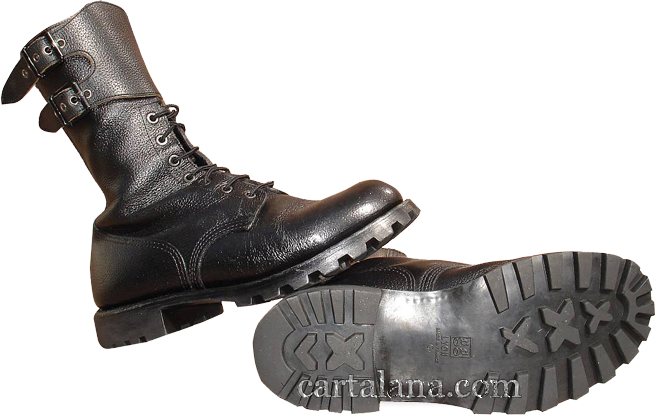
From the very beginning the original French "Rangers" were made of thick and rigid leather, and it was usually hard to "break in" and adjust such boot's for one's legs. The traditional "French way" of this problem solution consists in boot's leather impregnation with fat or treatment with shoe polish.
Nevertheless, during the marches, young recruits usually face with such common problem as bloody blisters and rubbed sore in the area of "Achilles tendon". In such cases the French sergeants traditionally use to say them: "S'est le pied qui se forme à la chaussure!" ("In such a way the feet form the shape to the boots!").
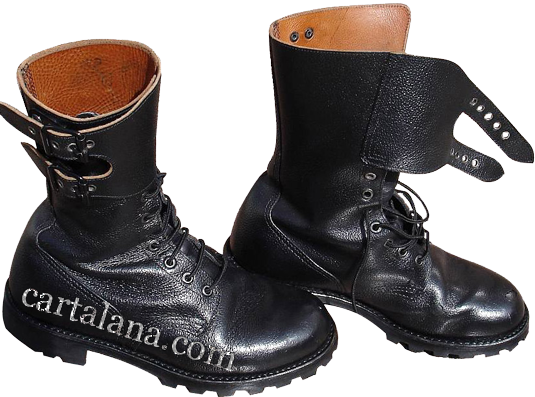
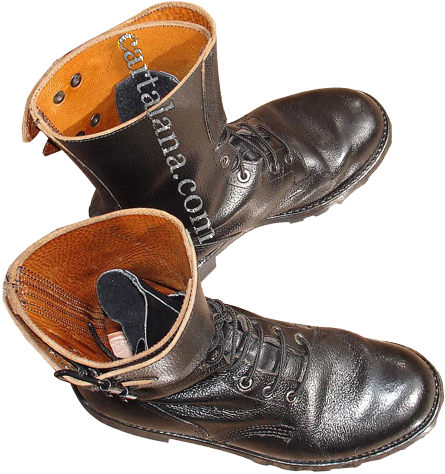
It is not easy to understand the real necessity of such an immolation, because the original US M-43 double-buckle boots (which has become the source of inspiration for the French) were much more soft and comfortable. Modern high-tech military footwear, taken as a whole, is much more comfortable and lightweight, although not so sturdy and durable.
To avoid an injury it is also recommended not to tighten the laces excessively. Since BMJA 65 ("Rangers") are quite rigid boots, it is better to choose half size bigger boots in order to reduce the friction by using an extra pair of socks and/or insoles.
In the beginning of the XX century the French army was using mainly low "ankle" "boots with gaiters or puttees, but since the beginning of the 1950s, the priority was given high-laced boots.
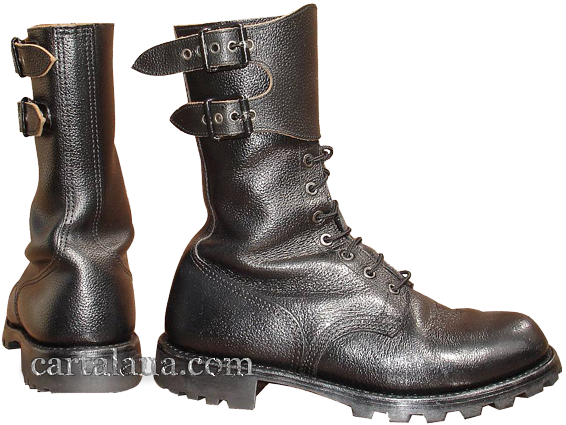
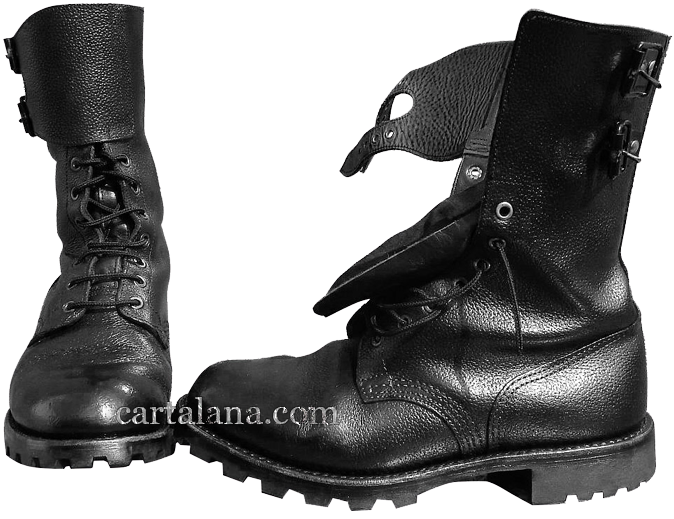
The introduction of high boots gives four major advantages.
Firstly, high boots with protective cuffs provide better protection against the water in comparison with low models, they are easier in use and require no additional elements like gaiters.
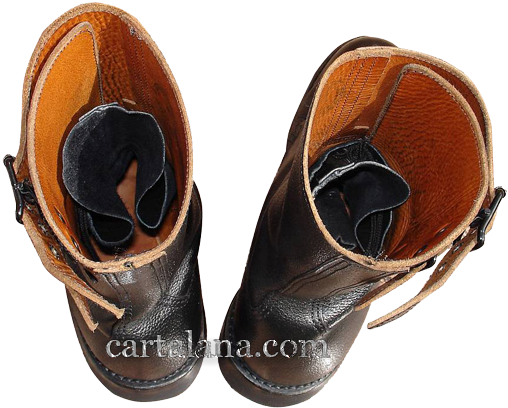
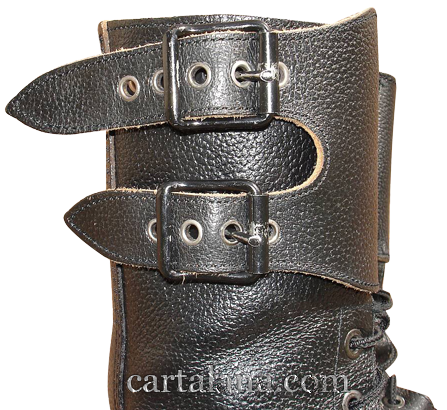
Secondly, due to the tight grip of the legs at the top of the boot, such boots provide better protection from dust, pebbles and other unwanted small pieces that could potentially injure the feet. As in the American M-43 prototype, the French BM65 "Rangers" are fastened with leather clasps with double buckles, the upper strap has five eyelets, and the lower one -just four eyelets.
Thirdly, stiff design and sturdy leather of BMJA 65 provide reliable feet protection and good ankle fixation, thus minimizing potential injuries, particularly during operations on rough terrain or when skydiving.
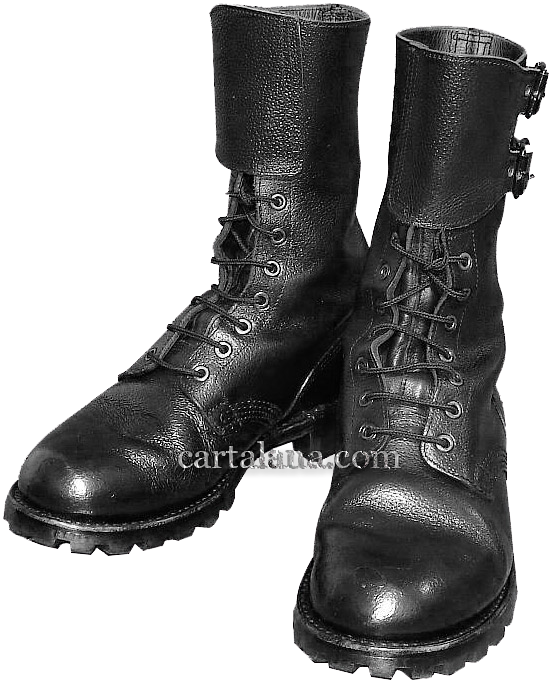
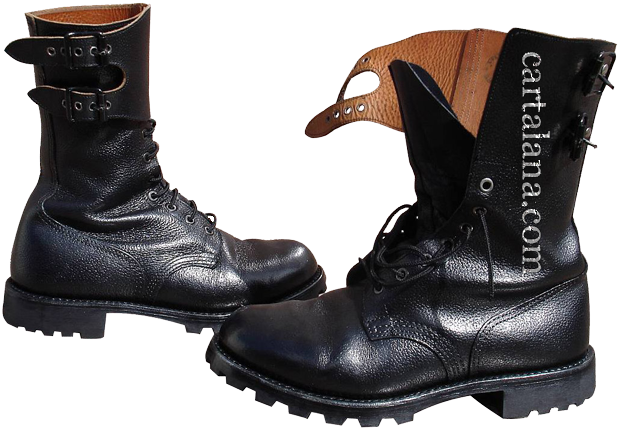
Fourthly, the thickness of the out-sole, especially if reinforced with metal plates, helps to protect the feet and ankles from dangerous objects, sharp stones and thorns, pitfalls, and reduces the possibility of injury and joint sprain. Compared with conventional boots, military boots give better protection of the foot and ankle, and they are more anatomically correct.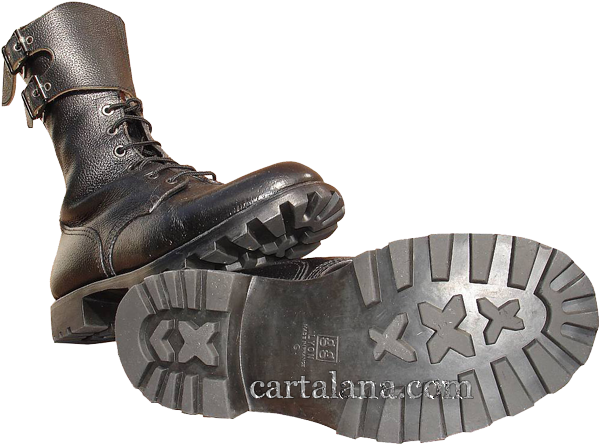
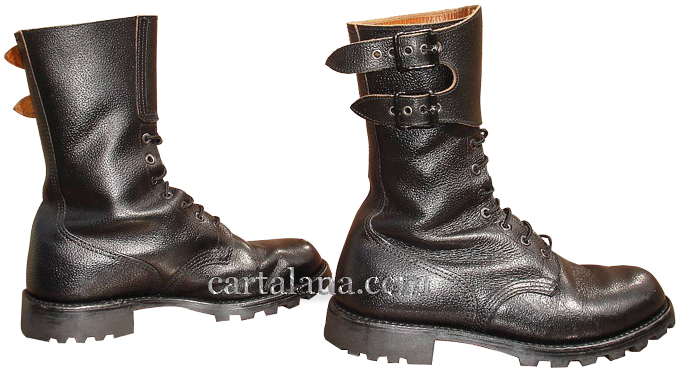
However, such boots are relatively heavyweight: a pair of French BMJA 65 "Rangers" weighs from 1.6 to 1.9 kg, depending on the size. For the size 42 the weight of a single boot is about 860 grams.
"Rangers" BM65 represent by themselves the further development of the French army boots (they were designed after the model introduced in the year 1952), which, in contrast to the previous models (of the years 1917, 1919, 1941, 1945), were higher - up to the middle of the ankle. Preproduction models of these boots were tested in 1952, just at the end of the Indochina conflict. The first BMJA Mle.52 boots were issued to the paratroopers in 1955, subsequently they were supplied to the other branches of the Armed Forces of France.
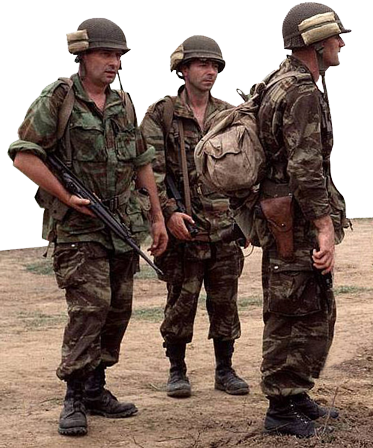
The most surprising fact that even nowadays one can buy these almost 60 years-old boots, as thousands pairs of French boots of early models (made from the rough-out natural leather) were kept in stock for a long time as a "mobilization reserve". However, such footwear is made of natural materials and is subject to degradation - they are no way eternal, and during the last decade the French Ministry of Defence has been gradually "cleaning" the old stocks. So the old boots are periodically written off from the warehouses and sold in large lots at auctions, often with all the warehouse storage labels and stickers.
Among these boots one can find older models of low boots that are to be worn with gaiters, very seldom they are in new condition, more often - after the repair and out-sole replacement. The boots of the model BMJA Mle.52 are often sold in the conditions from "very good" to "excellent", but sometimes the buyers complain that the out-soles tend to crack or crumble. Of course, the most important question is the storage conditions of these boots, whether they were not kept in extremely dry or hot environment..
A well-known fact: BMJA Mle.52 boots, the predecessor of "Rangers" BM65, represented by itself a type of boots with laces up to the ankle and sewn-on leather cuff (the so-called "guétron") on the top of the boot. Such cuffs fixed the ankles well and were fastened with clasps of single buckle, later on - with two buckles. From 1961, the design was modified: leather cuffs became an integral part of the boot's top, but not sewn on separately.
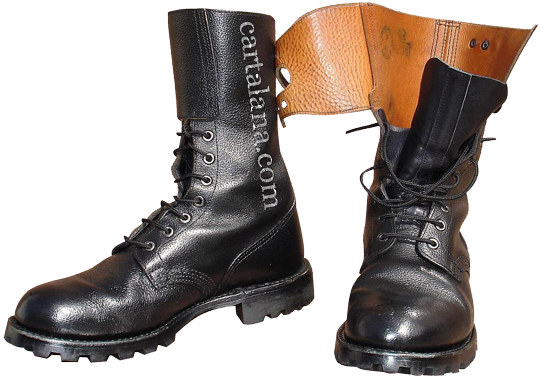
Soft and thin leather tongues of the French army boots have no padding and is composed of two parts, the seam in the middle of the tongue is covered with additional strip of leather. The boot's flap is half-"closed", i.e. stitched to the boot's top on the level of the high-most eyelet.
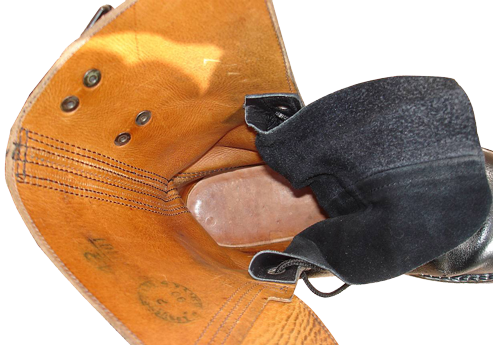
The French BM65 "Rangers" use to come in different versions: with or without an extra lining of thin "glove"-type leather of different shades of yellow, from light to dark. The unlined version of French BM65 boots are black-coloured inside.
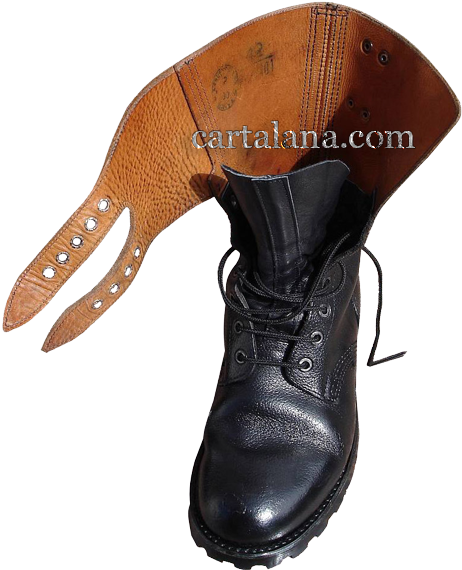
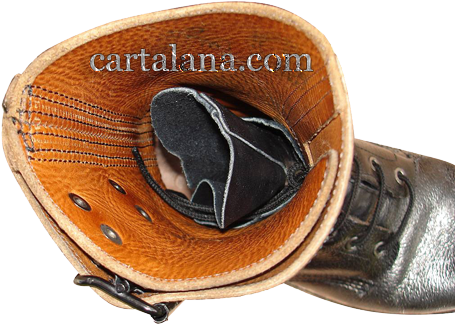
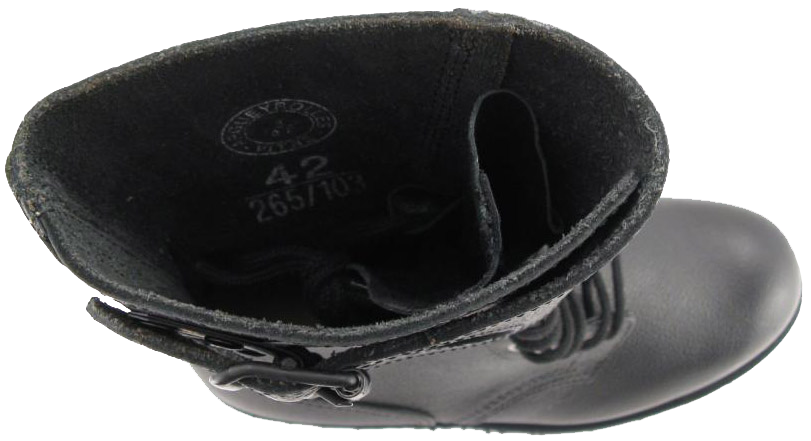
The original colour of BMJA Mle.52 was brown, but the soldiers of some combat units began to paint their boots in black from the year 1960. The final decision to use black colour as the main for the French army boots was made next year, in 1961. After such a decision the early models boots, which have been issued before had to be painted black with the help of appropriate shoe polish or fat mixed with black paint.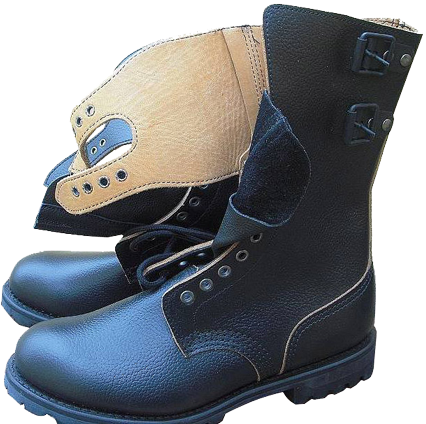
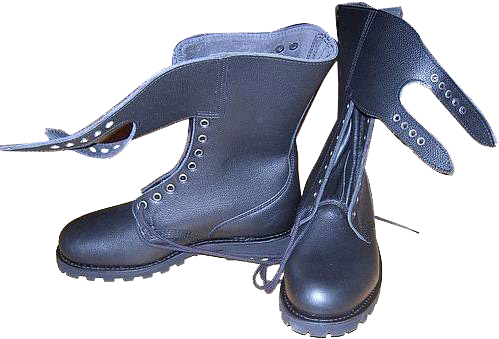
In 1965 the third version of the French model 1961 boots was introduced. Now this version is known under different names, for example:
- "Chaussures Rangers MLE 1965";
- "Brodequins Militaire Armée Française BM65 Grainée";
- "Rangers Brodequin de Marche Modele 1965",
- "Rangers de l'Armée Francaise BM65"...
Modern terminology for these boots also includes such names as: "botte de saut" ("jump boots") or "chaussure de combat" ("combat boots").
By the end of 20th - beginning of 21 centuries a considerable number of different models of "Rangeos" were kept in the country's military warehouses - all these supplies just weren't issued to the French soldiers and foreign legionnaires by the beginning of the 1990s. Even until now the batches of such boots periodically enter the commercial market. After 2002, the boots of French Gendarmerie began to arrive on the market sales from the warehouses.
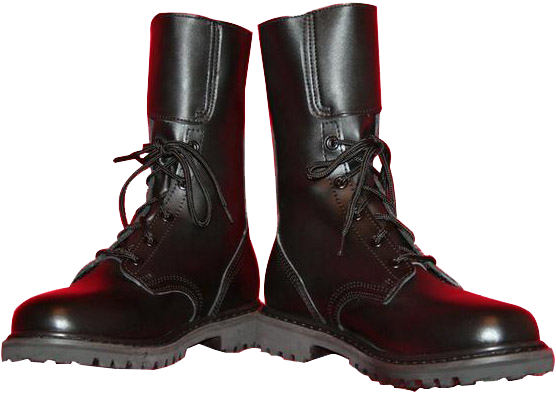
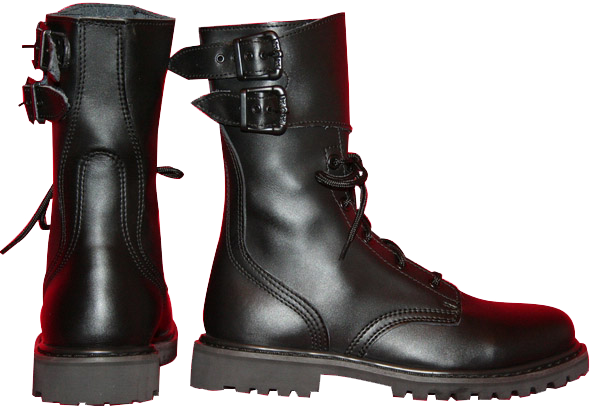
Traditionally, along with Army, Navy and Air Force, the National Gendarmerie is the fourth component of the Armed Forces of France, serving as a military police and responsible for prescribed law enforcement functions. Over the years the French gendarmes were involved in some missions abroad.
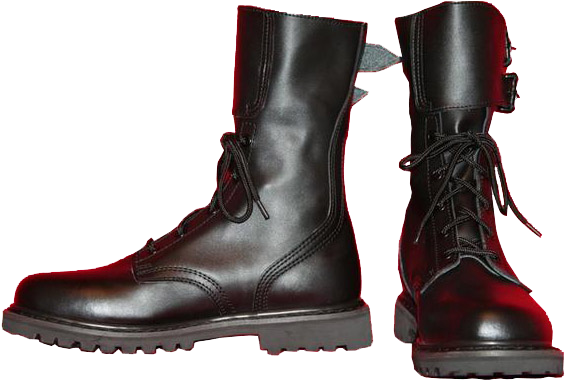
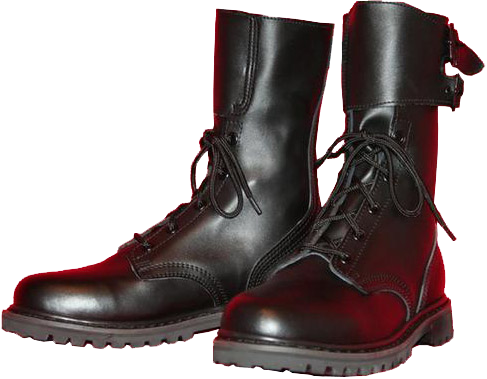
As a part of the Armed Forces, the French gendarmes also used to wear a modified version of "Rangers" - the leather of this boots was smooth, not grained, and these boots out-soles had different tread patterns. Also there were "Gendarmerie" boots models with cushioning inside (extra layer of thin "glove"-type leather).

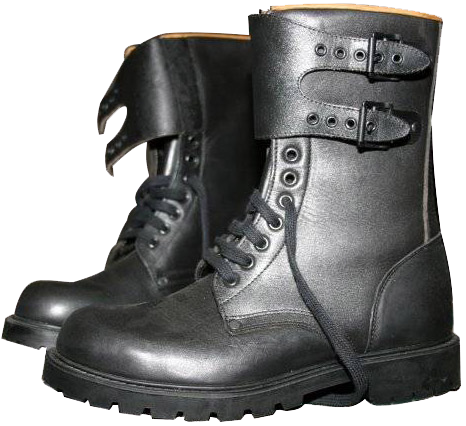
In 2002, following the commitments assumed during the presidential campaign, Jacques Rene Chirac, the President of France, brought the National Gendarmerie from the Armed Forces under control of the Ministry of Internal Affairs, having limited their area of responsibility to the territory of France. There have been made the appropriate changes to legislation along with structural reforms. Also the relationships and issues of cooperation between the police and the National Gendarmerie have been reviewed. Since that time the Gendarmerie began using not army, but police-type boots and other equipment.
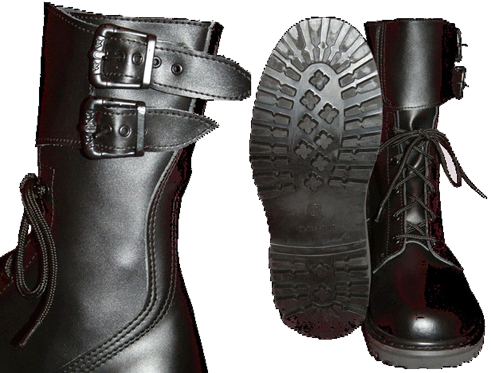
Special women's footwear was provided by the French Armed Forces for the female personnel. For example, more light and elegant boots for female Gendarmerie officers were made of smooth leather and had out-soles with tread pattern of shallow strips.
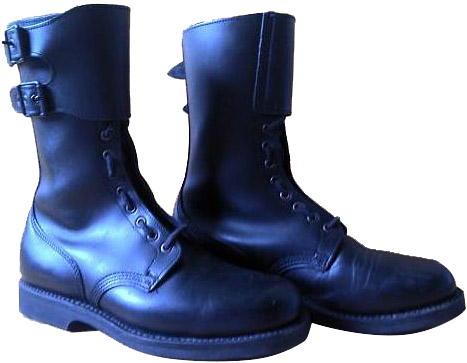
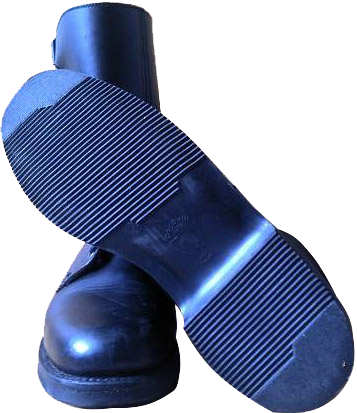
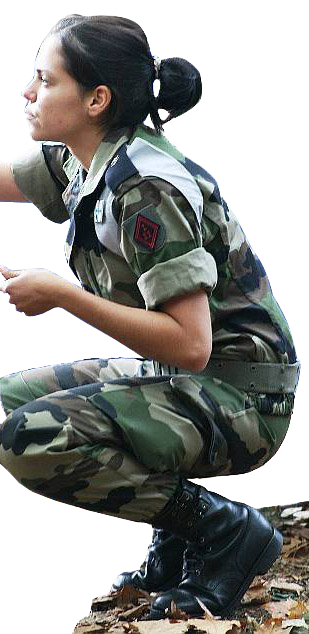
For some military units, such as medical personnel, there were some models of grainy leather boots with large-scale serrated tread pattern out-soles and zippers on the inner sides of the boot for easy pulling the boots on and off.
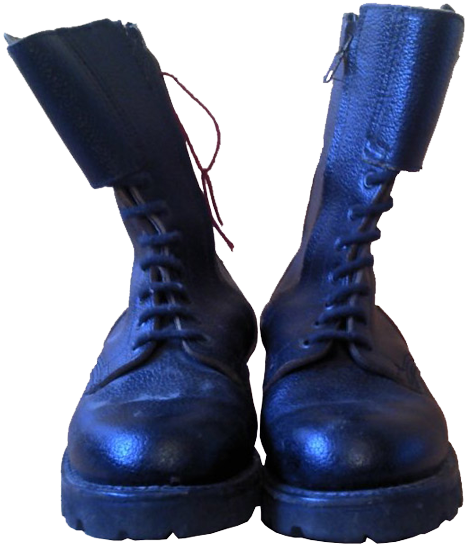
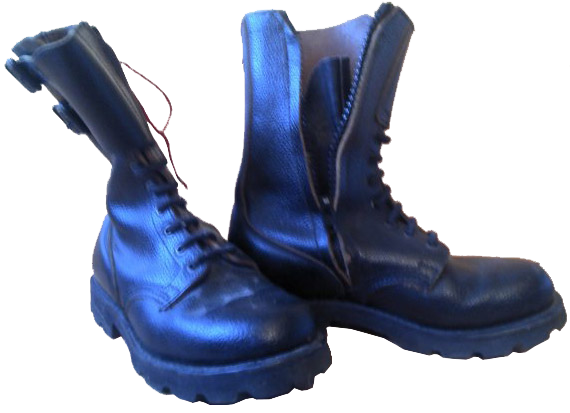
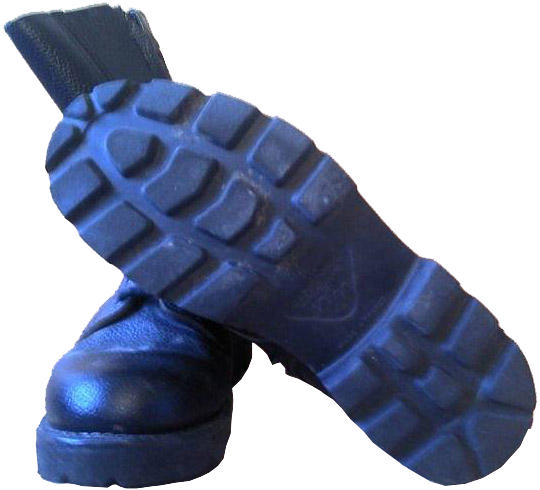
A pair of new original French BM65 "Rangers" boots with two buckles are quite expensive - up to 120 Euros. But demand creates proposal, and there are many commercial copies and even "fakes" of different quality on the boots market. Such copies of the French military boots cost 3-4 times cheaper, and the cheapest of them (the model with smooth leather and steel toe-cap) have almost nothing in common with original French boots, being just a parody of them.
Such commercial copies are produced by different companies, starting from "MilTEC", "MFH" and "ROTHCO" and finishing with Asian "No-name" brands. The quality of all these copies is definitely lower than of the original boots. The lacing system of such "fake" boots could have from 6 to 7 pairs of eyelets, the real French boots have number of eyelets from 7 (Army model) to 8 pairs (version for paratroopers).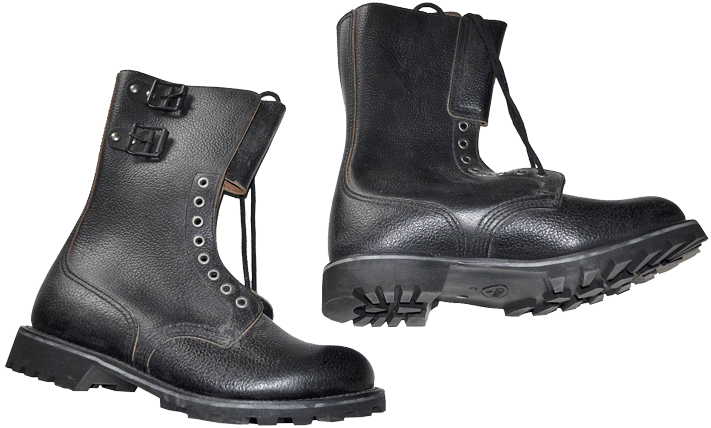
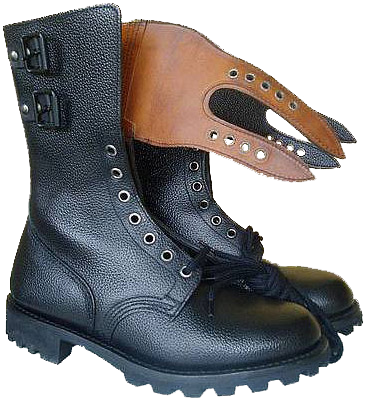
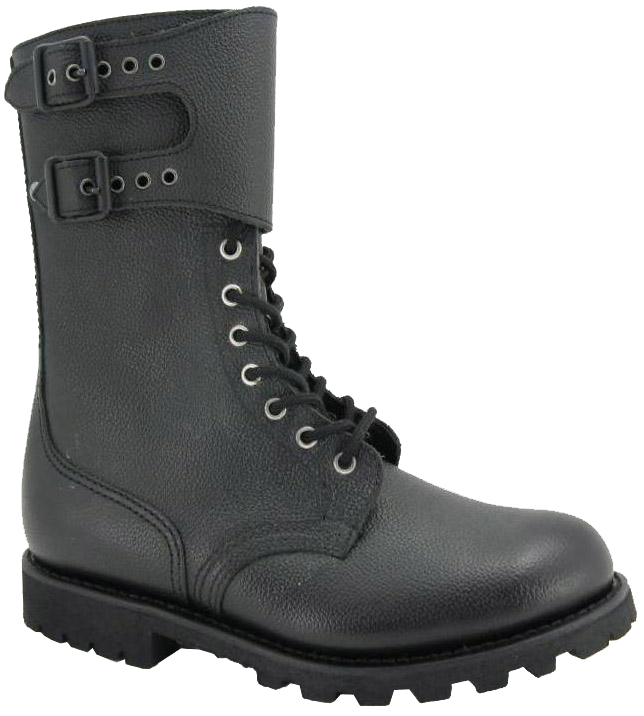
The original army boots are often designated "Modéle réglementaire" on the manufacturer's web-sites. The leather of all the fakes is thinner and poor in quality. The leather of the original "Rangers" is often grainy, and it should necessarily bear the marking of the manufacturer (on the out-sole and inside the boots: under the insole and on the inner side of the boot's top).
It is usually easy to distinguish the original French army boots even by weight - they are made of thick high-quality durable leather and hard rubber out-soles. They are generally heavier and stronger. The leather of the top, under condition of proper care and treatment with shoe polish, is very durable and robust and can serve honestly for many years.
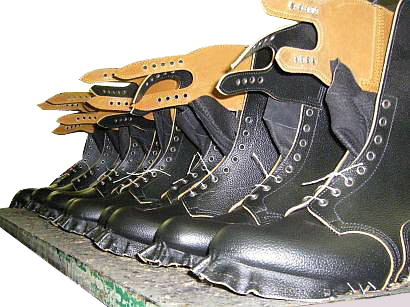
The out-soles of the French BMJA 65 "Rangers" are attached to the top by Goodyear' technology (stitched and glued), they are made of solid durable vulcanized rubber, resistant to gasoline and oil. The thickness of the outsole is about 1.2 cm in height, while the height of the heels is from 2 to 4 cm.
As it was mentioned earlier, "Rangers", introduced in 1965, were made of shiny black grained leather, softer than in the previous brown models of the years 1947 and 1952. The glue-and-stitching method of fixation was replaced by glueing only, when dense solid vulcanized rubber out-sole was glued directly to thick leather mid-sole.
The out-sole tread patterns were very diverse, probably the most diverse among all the countries in the world, and in most cases one can see the following patterns: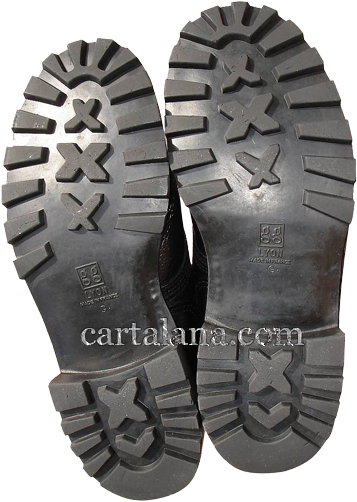
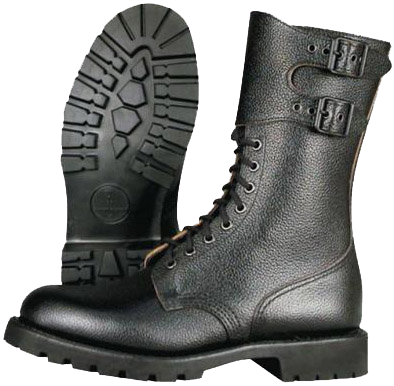
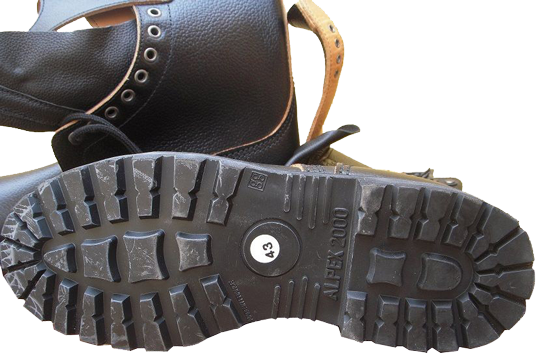
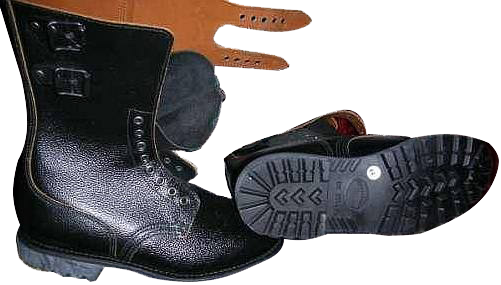
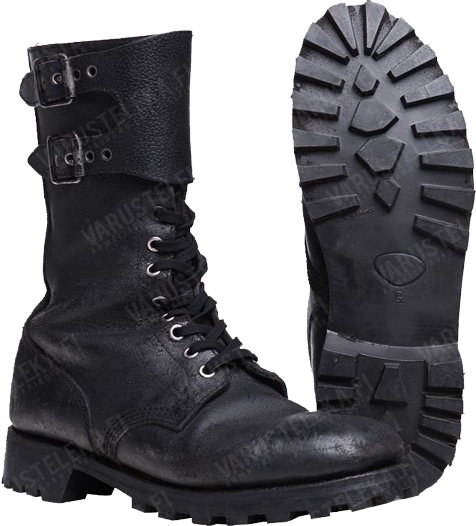
The marking sign of the boots is round-shaped and indicates the quarter and the year of manufacture, the manufacturer's name and the city of location. This marking can always be found on the original boots. If the "Rangers" boots are black inside (have no lining) the marking is usually white; if the boots are lined with additional layer of thin leather, the marking stamp is either hot-pressed or ink-painted.
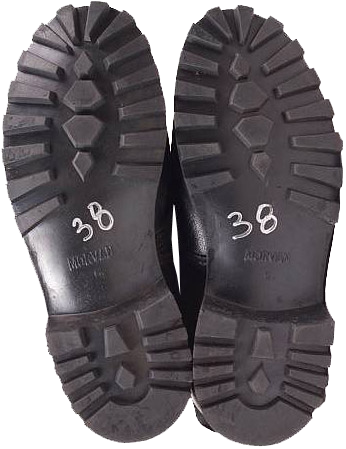
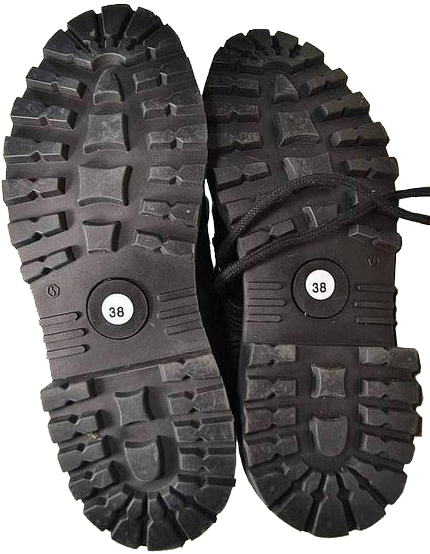
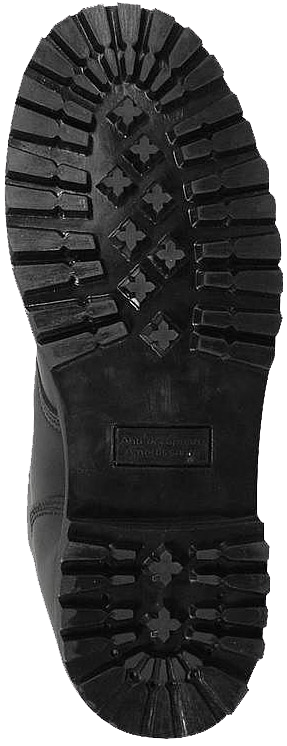
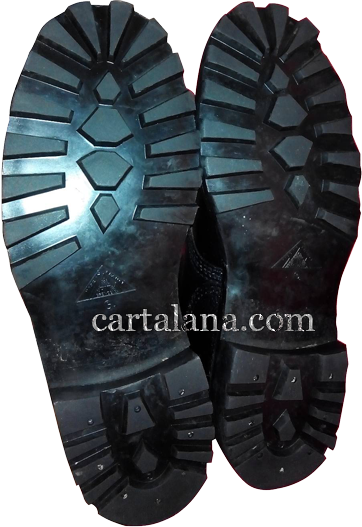
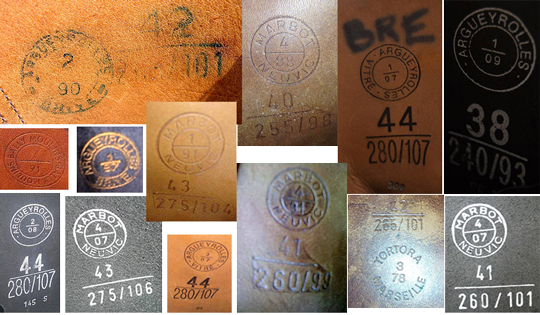
The marking label is also one of the most characteristic features, which allow to distinguish the real French military boots from all other "fakes" and copies.
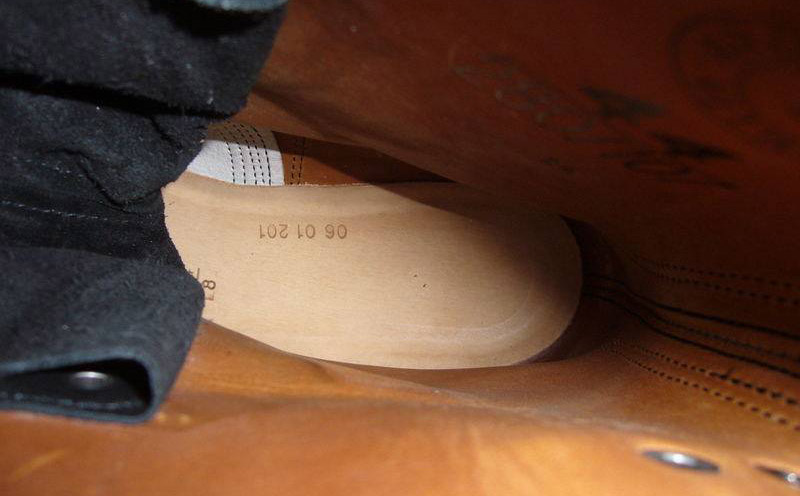
Usually the out-soles of the "fakes" have no marking at all, or the markings are very roughly made, primitive, often blurred. On the contrary, the lettering and logos on the original boots are very clear. One can see the example of the manufacturer's marking on the out-sole: "gg" is the name of the manufacturer and Lyon is the city, where the boot factory is located. The inscription "Made in France" confirms the French production of these boots. The Lyon-based company "gg", for example, also produces the out-soles for Swiss army model M-91 boots.
As it was told before, the marking (month and year, name and location site of the manufacturer),) is placed inside the boots, on the top inner side. This information is duplicated under the removable insole , along with serial and inventory numbers.




Among the manufacturers (cities of boots factories) of the French military boots the most common are: Marbot (Neuvic) and Argueyrolles (Brive or Vitre), more rare producers are Bally (Moulins) and Tortora (Marseille).
The French army pants from the uniform set (the models F1 (olive) or F2 (CCE - Central European Camouflage) are quite tight and not to be worn tucked into the boots. They are to be worn outside the boots, for this purpose the low-most sides of the trouser legs feature the sewn-on elastic bands.

According to the French military tradition, the elastic bands should keep the lower parts of the trouser legs just between the two buckles of the boot's clamps at the top of the boot. However, on some photos one can see the French military personnel with the pants tucked into the boots.

Exclusively for cartalana.com
We have much more interesting information on this site.
Click MENU to check it out!
∎ cartalana.com© 2009-2025 ∎ mailto: cartalana@cartalana.com